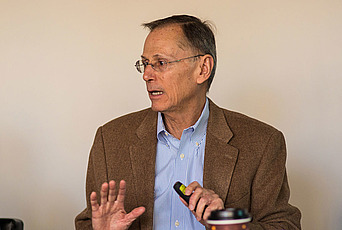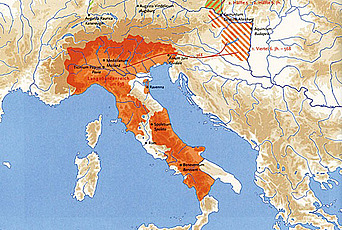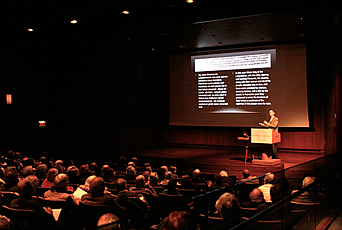Genetics and Identity

We are probably all familiar with the AncestryDNA advertisement for its genetic testing service in which a man states that he and his family had always thought that they were German. He goes on to explain that he danced in a German dance group and wore lederhosen, until, thanks to AncestryDNA, he found out that, in his words, “We’re not German at all!” 52 percent of his DNA came from Ireland, Wales, and Scotland. Thus, he explains, “I traded in my lederhosen for a kilt.” The ad is amusing and memorable, but it also reflects a disturbing trend in identity politics, namely the assumption that our genetic identity informs our ethnic identity, that it is somehow the essence of who we really are. The implication is that our cultural, social, religious, and political identities are secondary, dependent on our primary genetic identity, and we must bring them into harmony with our “real” selves, which is knowable only through our DNA.
There is nothing wrong or pernicious about having one’s genetic ancestry tested—it can be fun, enlightening, and I am sure that the millions of individuals who have paid for such tests have enjoyed learning about the putative geographic origins of their forbearers. Moreover, advanced genetic tests such as those offered by companies such as 23andMe can even screen for potential susceptibility to genetically transmitted health risks. However, at the same time, promoters of this testing are a bit too eager to equate geographical origin with ethnic origin. As one online advertisement states, “Your AncestryDNA results include information about your ethnicity across 26 regions/ethnicities.” But is a regional identity necessarily an ethnic identity?
The Greek term ethnos, from which our modern ethnic derives, has a long and troubled history. If for Homer, a band of comrades or a group of people living and working together might be termed an ethnos, the word later came to mean more specifically a nation or a people, although this doesn’t help much since the definition of a people or a nation has always been dependent on cultural and normative rather than biological imperatives. The imagined unity of a people could derive from shared customs, language, a common law, and a belief in a common origin, whether or not this origin was factual. In many regions of the world, groups with very different cultural identities inhabit the same geographical areas, maintaining their group identities by policing their social boundaries by social custom and marriage prohibitions. In spite of this, individuals and families often move across these lines, in time changing their identities, merging with other ethnicities, and eventually even adopting the shared sense of a past that unites these groups.
What, if anything, does this have to do with genetics? Certainly, populations living in one place for generations intermarry with each other, not only increasing their cultural sense of distinctiveness, but also creating, through the generations, certain identifiable genetically transmitted characteristics. Specific variations in the genome, termed alleles, become more common in such groups, although most of these would have no perceptible influence on the appearance or behavior of those who bear them. Other genetic variations that determine body build, hair, skin, and eye color are more evident, while some, such as those that influence the ability of adults to digest milk or to withstand certain diseases may be even more significant from an adaptive perspective, if less obvious. But no specific set of genetic similarities determines how an individual or group will be identified—what will be seen as essential in classifying members of a group is ultimately culturally determined. Moreover, cultural and political identities can trump genetic origins. Groups that are very similar genetically may hold vastly different and even hostile cultural identities, while people with divergent genetic origins can share a powerful sense of common identity that is the essence of ethnic consciousness.
And of course stability is not the rule in most of human history. Individuals and groups move about, in search of new opportunities, in wars of conquest and colonization, or conversely fleeing war and famine. As they merge with other populations, they bring new genetic material with the result that genetic admixture is the norm in human societies across the globe.
Migration and admixture can change not only the genetic profile of a region, but the complex and often dramatic act of migration can over time change the self-identity of both the host population and that of the new arrivals. These new identities are not specifically tied to genetic differences. Rather, they result from the introduction of new technologies, cultural traditions, social organizations, and the like, which themselves are changed by new environmental and social circumstances.
This confusion between genetic origin and ethnic identity becomes even more problematic when someone like myself is studying populations in the distant past. Together with an international, interdisciplinary team of geneticists, archaeologists, and historians, we are examining population structures and mobility along the collapsing Danubian frontier of the Roman Empire at the end of antiquity. Our comprehensive genetic analysis of almost all of the individuals buried in the sixth century in a single cemetery in what is now Hungary, for example, shows two groups clearly differentiated by genetic origins. One group, if plotted on a modern European genetic map (the way AncestryDNA or 23andMe traces someone’s genetic origins today) would plot to somewhere in central Europe. A second, more diffuse group is most similar to the modern-day populations of Italy. A similar, comprehensive examination of an Italian cemetery near Turin that dates from a few decades later shows a similar pattern: a central European group is again present, as is another group that, while not a close match to the southern group in Hungary, still would plot to Italy today. Our archaeological analysis of the two cemeteries shows that the differences between these two groups are not limited to genetic origin. In both cases, the individuals who belong to the central European group are buried with distinctive weapons and jewelry, while the southern burials are much simpler and contain no grave goods. This suggests that we are dealing with two populations that had not only different genetic origins, but also distinctive cultural practices, at least in the burial of their dead. Moreover, using innovative algorithms we have been able to uncover the biological kinship uniting individuals in these two cemeteries. Most of the family groups we identify in both cemeteries (some spanning three generations) are within the central European group, and we see no evidence of intermarriage between the two.
Since the sixth century is the period when, according to written sources, the Longobards or Lombards, a Germanic population, invaded and conquered much of Italy from what is today Hungary, and some archaeologists have associated these cemeteries with Lombards based on grave goods, it is tempting to label the group from Central Europe as Lombards. But is this justified? Lombard is, after all, a cultural, not a genetic label. Can we be sure that this population, either in Pannonia or in Italy, would have called themselves Lombards, and would have been recognized as such by their neighbors? It is not so simple. Since at least the fourth century, various Germanic groups had been pressing on the Danubian frontier, at times serving the Roman state and at times attacking and occupying the region. Our sources provide ethnic names for various groups: Rugians, Herules, Suebians, Gepids, as well as Lombards. Their origins, like those in our cemeteries, were likely somewhere in central Europe. Moreover, we read that the Lombards, as they expanded into the region in the early 500s conquered these other groups as well as the local post-Roman population still inhabiting the area. Presumably, the warriors in these societies were absorbed into the Lombard military that marched into and conquered Italy in the later sixth century. Perhaps our central European population, rather than being the newly arrived Lombards, were remnants of these other Germanic populations that had lived in the region for centuries. Of course, even if that is the case, they might have been absorbed in the Lombard kingdom and thus, in some ways might have considered themselves, and been considered by others, as Lombards. But while they may have been Lombard according to some criteria—Lombard law, for example, required that a foreigner seeking to enter the authority of the Lombard king had to accept Lombard law—in other respects, they may have continued to hold a different ethnic identity, perhaps in their religion, language, or cultural traditions. Thus the question “Who were they really?” is not one that can be answered through genetic analysis, no matter how detailed.
We can say even less about the two “southern” groups our analyses have discovered. Were they the local, civilian population in the region? Were they the servants or slaves of the militarized society with whom they were buried? How would they have identified themselves? As Romans, as Pannonians, as Italians? And how would that other population have identified them? As peasants? As slaves? Perhaps their fundamental identity would not have been ethnic at all—perhaps their identity was primarily religious—Christian versus pagan, or orthodox versus Arian. Nothing in their DNA can answer these questions.
Our genomic research can tell us a great deal about differences within populations in the past; it illuminates population movements and even suggests coincidences between cultural and biological contours within societies that can help us understand social organization. What it cannot do, just as AncestryDNA cannot do, is inform us about the ways that people in the past identified themselves, that deeply held and powerful conviction, regardless of biology, of who we really are. Nor can it tell us how others might have identified these people in the past. To return to our gentleman in the AncestryDNA commercial, while he may be fascinated by his genetic ancestry, he is no more a Scott than he was a German—whatever his biological origins may be, he is clearly an American, and would be so seen in Edinburgh or in Munich.


